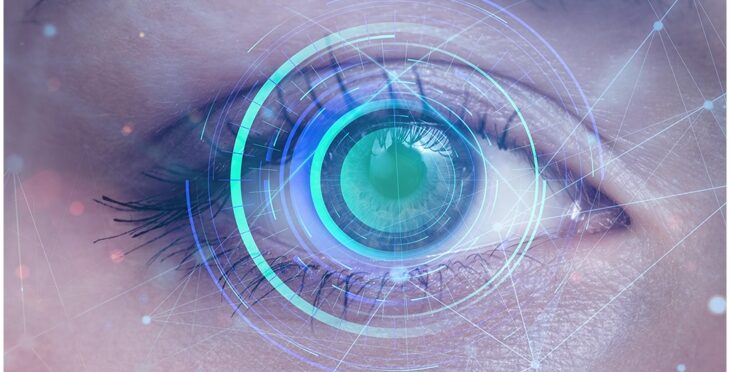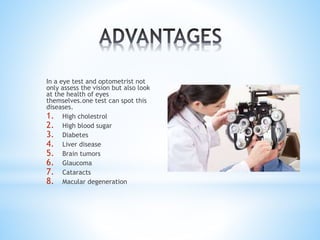Eyecare Near Me: Comprehensive and Reliable Vision Services
Eyecare Near Me: Comprehensive and Reliable Vision Services
Blog Article
The Role of Advanced Diagnostic Equipment in Identifying Eye Disorders
In the realm of ophthalmology, the usage of innovative diagnostic tools has actually changed the early identification and management of different eye conditions. As the need for precise and timely diagnoses continues to expand, the assimilation of cutting-edge tools like optical coherence tomography and visual field testing has ended up being vital in the world of eye treatment.
Relevance of Early Diagnosis
Early diagnosis plays a critical function in the efficient monitoring and therapy of eye conditions. By detecting eye disorders at an early phase, health care carriers can provide appropriate therapy plans tailored to the details condition, eventually leading to better end results for clients.

Modern Technology for Finding Glaucoma
Advanced analysis innovations play a vital duty in the very early detection and surveillance of glaucoma, a leading cause of irreparable blindness worldwide. One such innovation is optical comprehensibility tomography (OCT), which offers thorough cross-sectional pictures of the retina, permitting the dimension of retinal nerve fiber layer thickness. This measurement is essential in evaluating damages triggered by glaucoma. One more innovative device is visual area screening, which maps the sensitivity of a client's visual area, aiding to spot any type of locations of vision loss characteristic of glaucoma. Furthermore, tonometry is utilized to gauge intraocular stress, a major danger aspect for glaucoma. This examination is important as raised intraocular stress can lead to optic nerve damage. Additionally, more recent modern technologies like the use of synthetic intelligence algorithms in examining imaging information are revealing promising cause the early detection of glaucoma. These sophisticated diagnostic tools enable ophthalmologists to diagnose glaucoma in its early stages, enabling timely intervention and better management of the disease to avoid vision loss.
Function of Optical Coherence Tomography

OCT's ability to evaluate retinal nerve fiber layer density permits exact and objective dimensions, helping in the very early detection of glaucoma even prior to visual area flaws emerge. OCT modern technology permits longitudinal surveillance of structural adjustments over time, helping with tailored treatment strategies and prompt interventions to assist preserve clients' vision. The non-invasive nature of OCT imaging likewise makes it a recommended choice for monitoring glaucoma progression, as it can be duplicated frequently without creating discomfort to the client. On the whole, OCT plays an essential duty in boosting the diagnostic accuracy and monitoring of glaucoma, eventually adding to better outcomes for individuals in danger of vision loss.
Enhancing Medical Diagnosis With Visual Area Screening
A crucial part in comprehensive ophthalmic evaluations, visual field testing plays a pivotal function in enhancing the analysis process for various eye conditions. By examining the complete level of an individual's aesthetic field, this test offers important info concerning the useful honesty of the whole visual pathway, from the retina to the aesthetic cortex.
Aesthetic area testing is particularly valuable in the medical diagnosis and monitoring of problems such as glaucoma, optic nerve disorders, and various neurological diseases that can affect vision. official website Via measurable measurements of peripheral and main vision, medical professionals can find subtle changes that might suggest the presence or progression of these problems, even before noticeable signs and symptoms take place.
Moreover, visual area testing permits the surveillance of treatment efficiency, assisting ophthalmologists customize therapeutic treatments to private people. eyecare near me. By tracking adjustments in aesthetic field efficiency in time, doctor can make educated choices regarding readjusting medicines, recommending medical interventions, or carrying out other suitable measures to protect or improve an individual's visual function
Taking Care Of Macular Degeneration

Final Thought
Finally, progressed diagnostic tools play a vital duty in recognizing eye problems beforehand. Technologies such as Optical Comprehensibility Tomography and aesthetic area testing have considerably enhanced the accuracy and efficiency of diagnosing conditions like glaucoma and macular deterioration. Early discovery permits timely intervention and management of these problems, inevitably causing much better outcomes for patients. It is crucial for health care professionals to remain upgraded on these improvements to offer the most effective possible take care of their individuals. eyecare near me.
Report this page